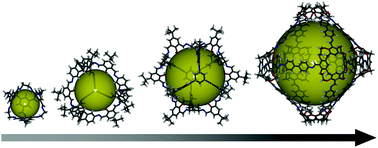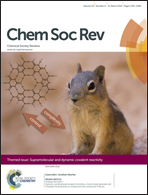Organic cage compounds – from shape-persistency to function
Abstract
Defined cavities are found in biological systems, such as in enzymes to accelerate specific reactions with specific molecular targets, or as transport containers for molecular cargos. Chemists have been inspired by those phenomena found in nature and synthesized defined cage compounds for different purposes, such as for stabilizing reactive intermediates, running reactions within the cavities or studying recognition events. However, most cage compounds are based on the coordination of metal ions, and only a few are charge neutral. Purely organic cages are usually charge neutral and more stable due to existing covalent bonds. Covalent bonds can be made in two ways, applying irreversible reactions or reversible reactions. By introducing dynamic covalent chemistry (DCC), cages have become accessible in good yields from rather simple precursors. Here, we compare both methods and highlight those that give very good yields. Furthermore, the use of organic cage compounds in sorption, recognition, sensing, separation and stabilization of molecules will be discussed.

- This article is part of the themed collection: Supramolecular and dynamic covalent reactivity

 Please wait while we load your content...
Please wait while we load your content...